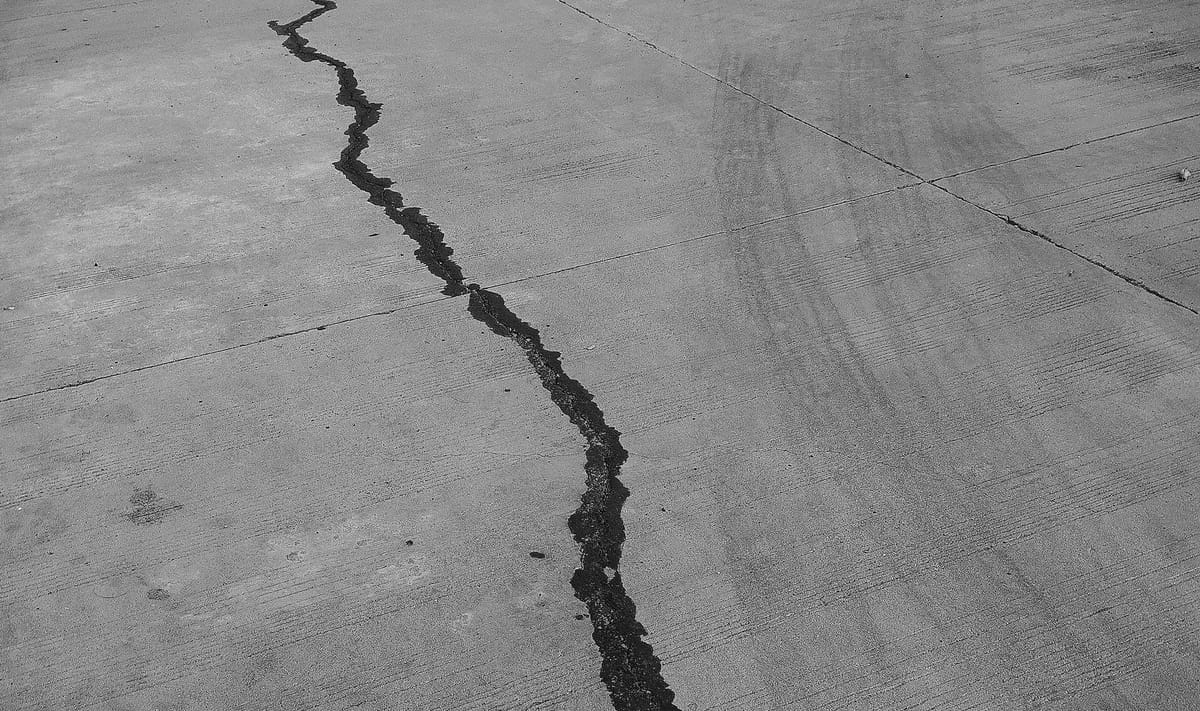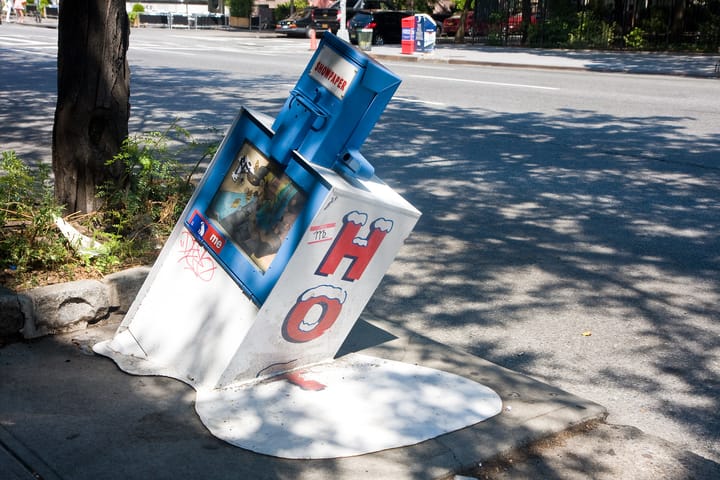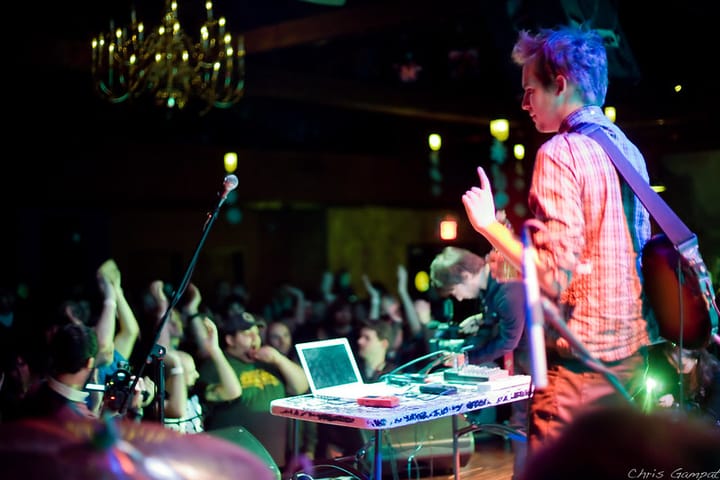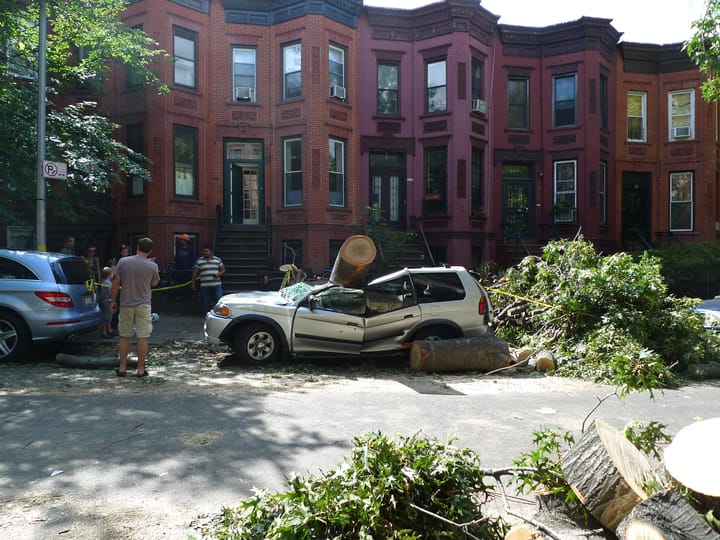A West Coaster’s guide to New York City earthquake safety
The mayor is out here spouting misinformation, but The Groove has got you covered.

Greetings, groovers and shakers. You may have heard rumblings about a lil earthquake today? A 4.8 magnitude earthquake was felt across much of the East Coast this morning, and while no injuries or fatalities have been reported as of press time, this kind of shakeup is extremely rare on this side of the lower 48 — the last one this big took place in 1783 — meaning that people were left largely unprepared and frankly, a little freaked out.
And I know what you’re thinking: thank god one of the founders of this New York City news publication is originally from the West Coast (Seattle, not demon California thanks), and here to hold our quivering hands through this fresh new seismological trauma. What, you’re really content putting yourself in the hands of an emergency system that sent you a text alert about the quake a cool 38 minutes after it happened?
We’ll leave the meme-ing mostly to Twitter (it’s very good on there today), but since it’s come to my attention that no one here knows one single thing about basic earthquake safety, boy oh boy am I going to seize on the opportunity to get up on my high horse about it. It’s my god-given right as a person who’s lived a life in constant low grade terror of The Big One.
So all that said, let’s get into a quick little Groove guide to Earthquake Safety 101:
Do NOT get into a door frame!
Time was, people would tell you to stand in a door frame during a quake because if your building falls down, the frame is likely to stay standing, or something along those lines. WRONG. It’s not really safer than any other part of the house, and you run the very real risk of your fingers getting smashed up by a door that’s flailing around on its hinges. Aren’t you glad already that you’re getting your safety advice from me and not the mayor?
DO: Drop, cover & hold on (and always face down, ass up)
Instead, drill into your brain that Drop, Cover, and Hold On is the big piece of earthquake safety everyone needs to know. Drop to your hands and knees, take cover if possible under something sturdy like a desk or a table, hold onto it for stability, and stay there until the shaking stops.
But a lesser-known fact that I learned in my years of mandatory school earthquake drills is that when you get under a table or wherever, you should do your best to position yourself with your butt facing any nearby windows, and your head facing away. That way, if the glass breaks and shards start flying, they’ll lodge themselves in your thick, supple haunches and not your precious, money-making face.
Protect your neck
Wherever you’re huddled, it’s a good idea to brace your hands over your neck, for obvious reasons. If you’re in bed, cover your head and neck with a pillow.
Outside or inside?
The basic safety advice on location during an earthquake is this: if you’re inside, stay inside, and if you’re outside, stay outside. Don’t be running around while the earth is shaking!! That’s unsafe for many reasons, one of which is that anywhere near the immediate exterior or interior of a building (including windows) is considered one of the least safe places you can be during an ongoing earthquake. Back in the 2011 New York quake, no one in my Soho office knew what to do with themselves, and the building manager eventually forced everyone to go outside and stand around under the rickety, rusting fire escapes, despite my protestations — he was wrong to do it.
The Red Cross does recommend getting yourself outside to a safe, clear area post-quake, but they also recommend making sure that nothing will fall on you “such as bricks from a building, power lines and trees,” and if that’s not possible (this is New York City after all), it’s just as well to stay put inside.
What about aftershocks?
They’re likely to happen. Mentally prepare yourself for this possibility, and if an aftershock does indeed hit, follow the same safety protocol that you would for the initial quake.
What if I’m in transit?
If you’re on the train, you’re kind of at the mercy of how the MTA decides to handle it, but our friends at San Francisco’s Bay Area Rapid Transit recommend sitting down if possible and grabbing a hold of something to keep yourself steady.
If you happen to be behind the wheel of a car when an earthquake hits, this is as good a time as any to reconsider your choice to have a car in New York City, but also, authorities recommend slowly and safely coming to a stop (no panicked slamming of the brakes please) and getting yourself as far out of moving traffic as possible, and not under a bridge, overpass, tree, or other large thing that can fall.
Please don’t call the authorities or Brian Lehrer
I’ve heard through the grapevine that a lot of people called 911 today to report that their buildings were shaking, and on air, Brian Lehrer was asking people to “call in with something more than shaking, we know now everybody felt shaking.” No need to clog up crucial civic phone lines of any kind to report than an earthquake happened. Save that for if there’s a real safety hazard unfolding as a result of said earthquake! If not, just tweet and text or shout at a local newscaster about it like a normal person, come on.
If you’re still anxious and want to become an earthquake safety autodidact, you can find some solid safety resources and mythbusting here, here and here.
Keep this information handy for the future. Today’s New York quake was the first earthquake ever to be recorded in history, and if such an event happens again, people all over the country will be looking to you, New Yorkers, for your expert advice.




Comments ()